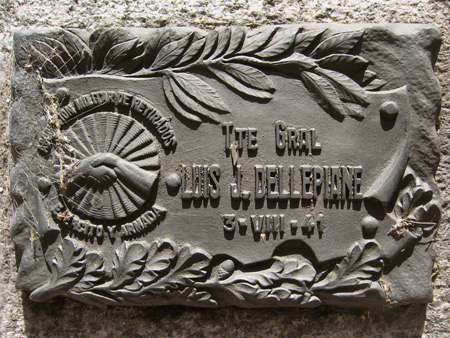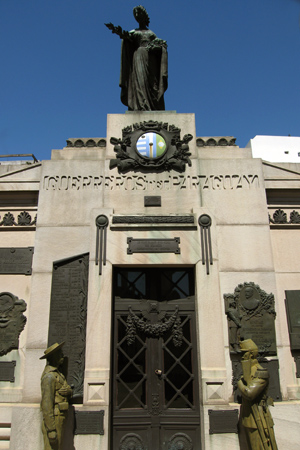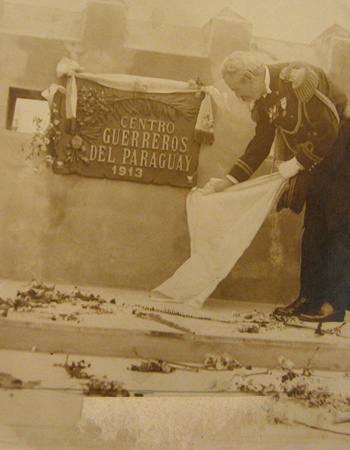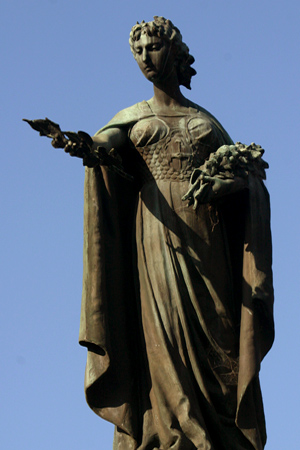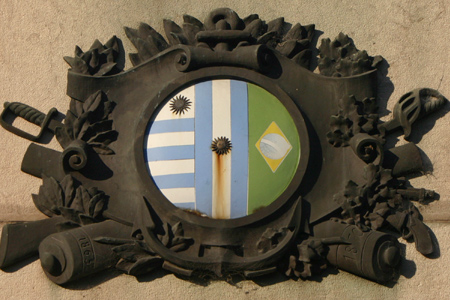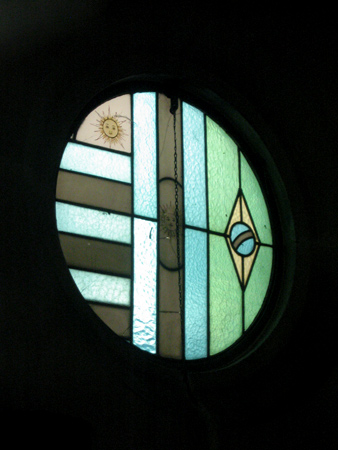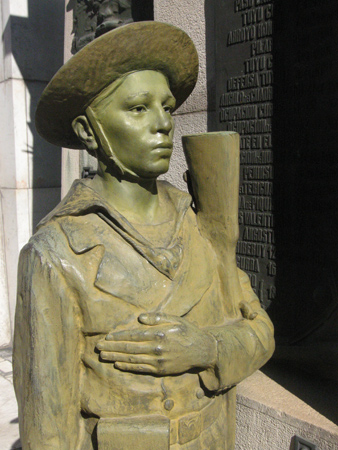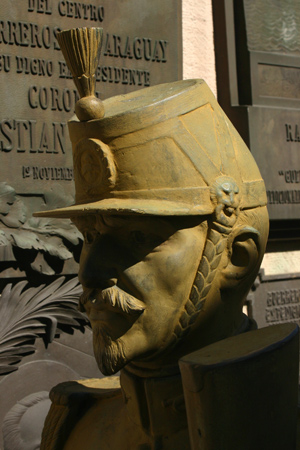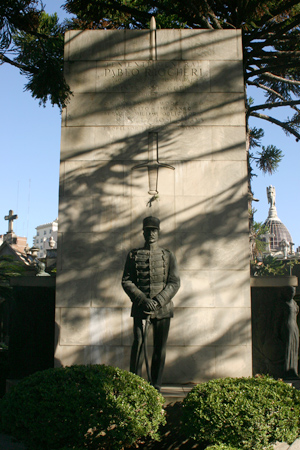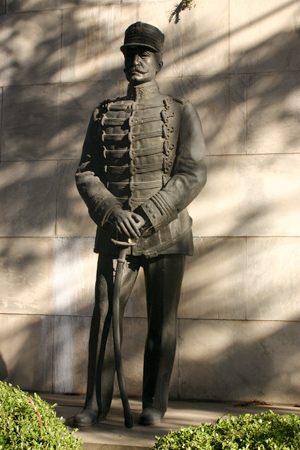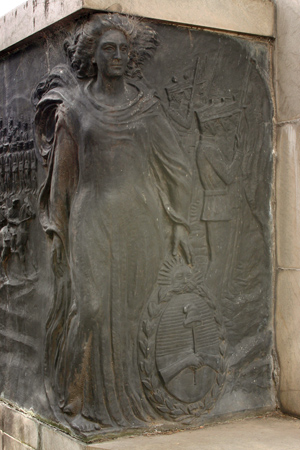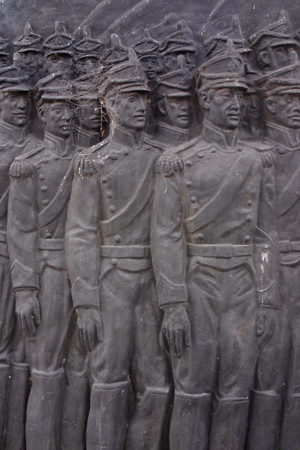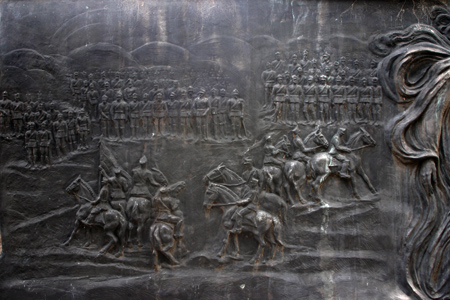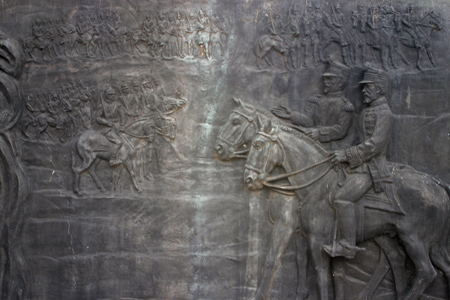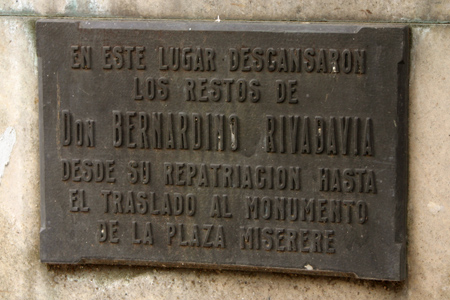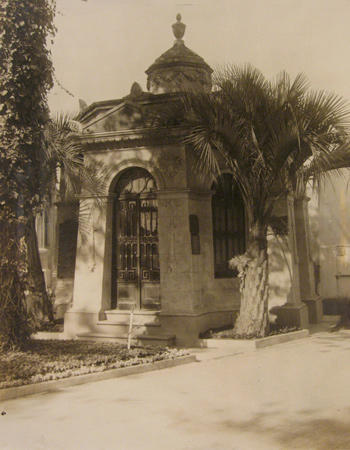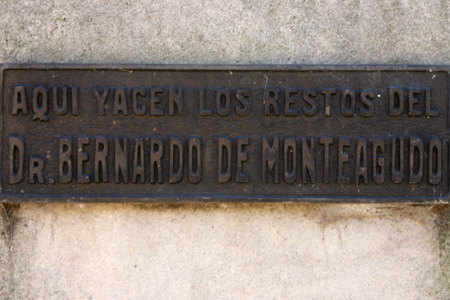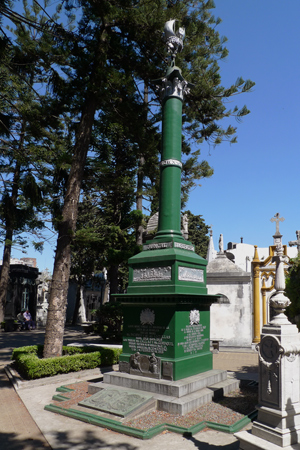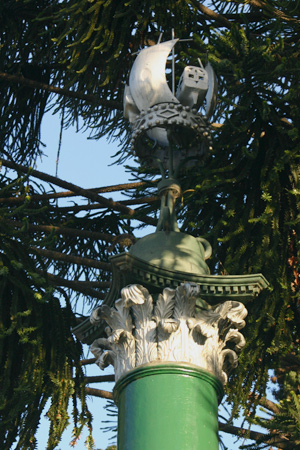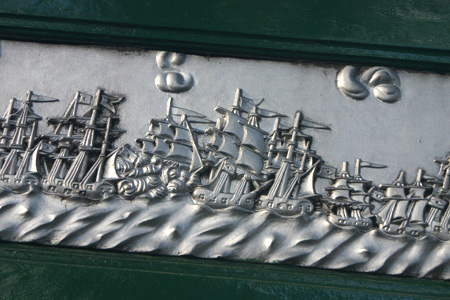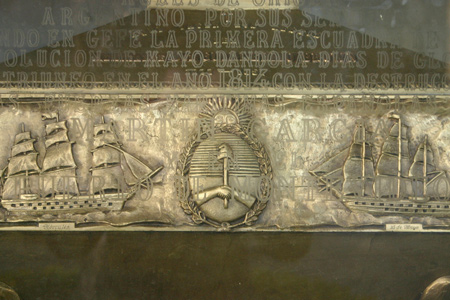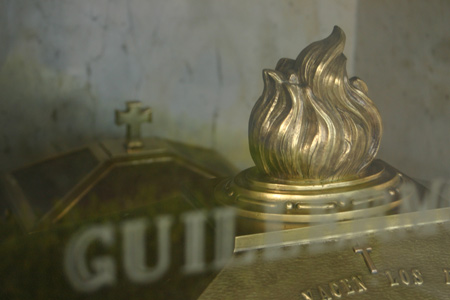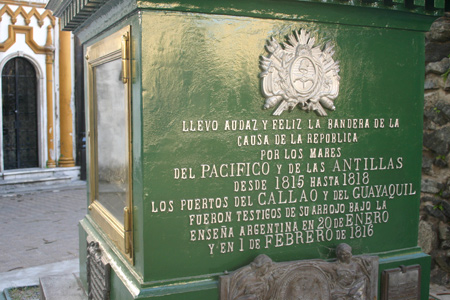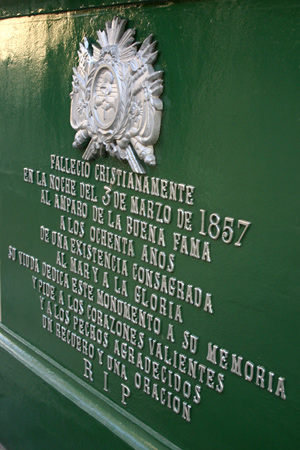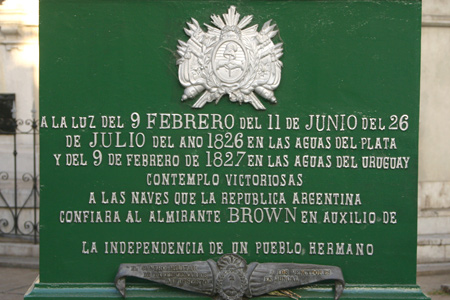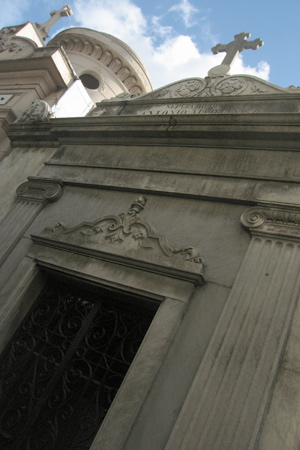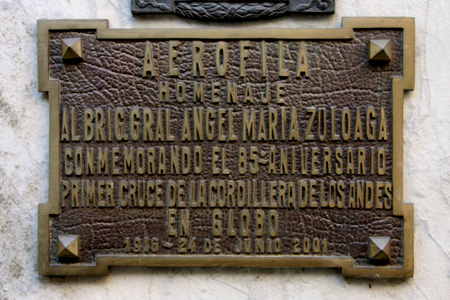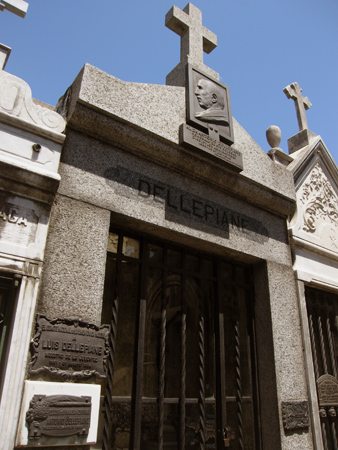
Lots of Dellepiane tombs are scattered through the cemetery, but this vault holds two of the most important family members. Antonio Dellepiane chose not to practice law after graduating with honors & much praise in 1892. Instead, he focused on education in criminology. As first professor of the newly-established Sociology department at the Universidad de Buenos Aires, Antonio traveled to Europe to bring back the latest theories & teachings to Argentina.
Several books & faculty positions later, Antonio excelled in another field: history. In the early 1920s, he was named Director of the Museo Histórico Nacional & used his position to write several historical biographies. With access to original documentation, Antonio discovered the lives of two important women, María Sánchez de Thompson & Carmen Nóbrega de Avellaneda (wife of President Nicolás Avellaneda). He passed away in 1939 & a plaque was donated by master sculptor Rogelio Yrurtia on the first anniversary of his death:
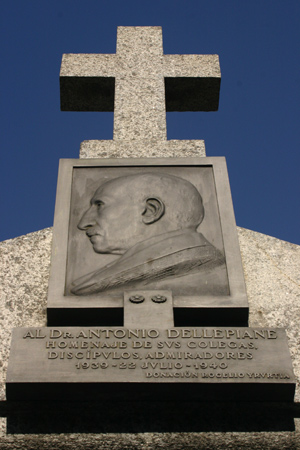
During the 1919 Semana Trágica, Lieutenant General Luis J. Dellepiane restored order to Buenos Aires after a metalworkers’ union strike spiraled out of control. He had previously been in charge of the city’s police force after the 1909 assassination of Ramón Falcón & remained in that position until 1912. By 1919, Luis had assumed command of the Second Division of the Argentine army stationed in Campo de Mayo. Luis marched his troops into Buenos Aires to engage striking workers at the request of the Minister of War. Violence continued & almost 1,000 people died in the most violent social uprising ever seen in the city.
Luis would later be appointed Minister of War during Hipólito Yrigoyen’s second term & resigned when fellow general José Félix Uriburu ousted the President in 1930. Oddly enough, Luis also studied to be a civil engineer & did the first geodetic studies of Argentina. Only two plaques commemorate Luis, none of which mention his role in the Semana Trágica:
